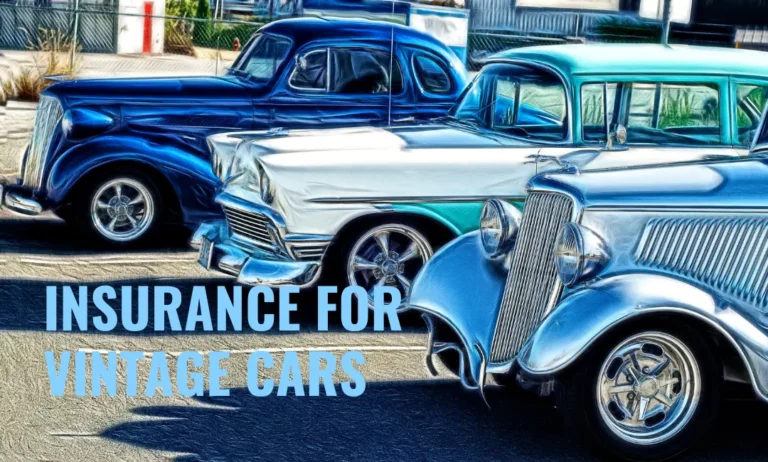Insurance for Vintage Cars
Owning a vintage car is a passion for many enthusiasts. These classic automobiles are not just modes of transport but are often seen as prized possessions, investments, and pieces of automotive history. Given their unique value, insuring a vintage car requires a specialized approach. This comprehensive guide will walk you through everything you need to know about vintage car insurance.
What is Vintage Car Insurance?
Vintage car insurance is a specialized type of auto insurance designed to cover classic and antique cars. Unlike regular car insurance, it takes into account the unique value, limited use, and special needs of vintage vehicles. This type of insurance often includes agreed value coverage, which means the insurer and the owner agree on the car’s value upfront, ensuring you get the full amount in case of a total loss.

Why Do You Need Vintage Car Insurance?
1. Specialized Coverage
Vintage cars often have higher values due to their rarity, historical significance, and the care taken in their maintenance and restoration. Standard car insurance policies may not provide adequate coverage for these factors.
2. Agreed Value
Unlike standard insurance policies that only pay out the depreciated value of a car, vintage car insurance usually offers an agreed value policy. This means the insurer agrees to pay a pre-determined amount in the event of a total loss.
3. Lower Premiums for Limited Use
Vintage cars are typically not used as daily drivers. They are often driven occasionally, for leisure or to car shows. Insurance policies for these cars take limited usage into account, often resulting in lower premiums.
4. Coverage for Spare Parts and Accessories
Finding replacement parts for vintage cars can be challenging and expensive. Vintage car insurance often covers the cost of spare parts and accessories, ensuring your car can be restored to its original condition.
What Does Vintage Car Insurance Cover?
1. Collision Coverage
This covers damage to your vintage car in the event of an accident, regardless of who is at fault.
2. Comprehensive Coverage
This covers non-collision-related damage such as theft, vandalism, natural disasters, and fire.
3. Liability Coverage
This covers bodily injury and property damage to others if you are at fault in an accident.
4. Uninsured/Underinsured Motorist Coverage
This provides protection if you are involved in an accident with a driver who does not have sufficient insurance.
5. Spare Parts Coverage
Some policies offer coverage for spare parts, which can be expensive and difficult to replace for vintage cars.
6. Roadside Assistance
Many vintage car insurance policies include roadside assistance tailored for classic cars, ensuring you get the help you need without further damaging your prized possession.
Factors Affecting Vintage Car Insurance Rates
1. Car’s Value
The agreed value of the car is a primary factor in determining your insurance premium.
2. Usage
How often and for what purposes you use the car. Limited mileage and usage can lead to lower premiums.
3. Storage
Where and how the car is stored when not in use. Secure, climate-controlled storage can reduce the risk of damage and lower premiums.
4. Driver’s Age and Experience
Older, more experienced drivers typically receive lower insurance rates.
5. Driving Record
A clean driving record can significantly reduce your insurance costs.
Tips for Choosing the Best Vintage Car Insurance
1. Shop Around
Compare quotes from multiple insurance providers to find the best coverage at the most affordable rate.
2. Check the Insurer’s Reputation
Look for insurers with a good reputation in handling vintage car claims and customer service.
3. Read the Fine Print
Ensure you understand all the terms and conditions of the policy, including any exclusions or limitations.
4. Consider Additional Coverage
Evaluate if you need additional coverage options like spare parts coverage, roadside assistance, or coverage for car shows and events.
5. Regularly Reassess Your Coverage
The value of vintage cars can change over time. Regularly reassess your coverage to ensure it remains adequate and update the agreed value if necessary.
Conclusion
Insuring a vintage car is essential to protect your investment and ensure peace of mind. By understanding the unique aspects of vintage car insurance, you can make informed decisions and choose the best policy for your prized possession. Remember, a well-chosen insurance policy not only safeguards your car but also enhances your overall vintage car ownership experience.
